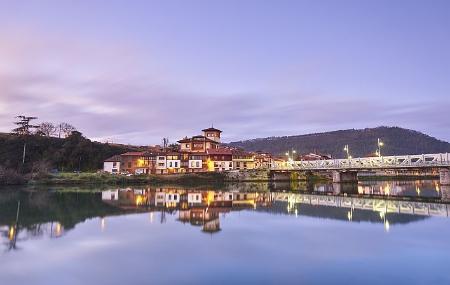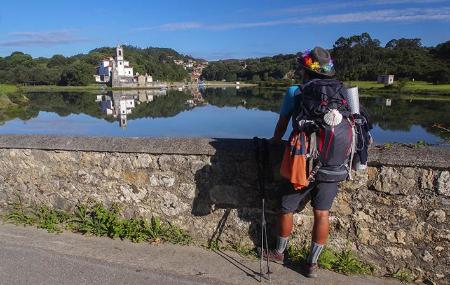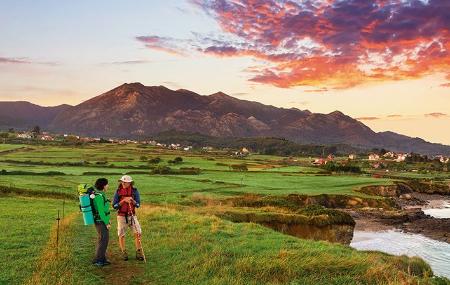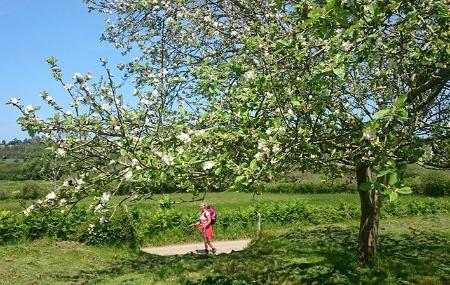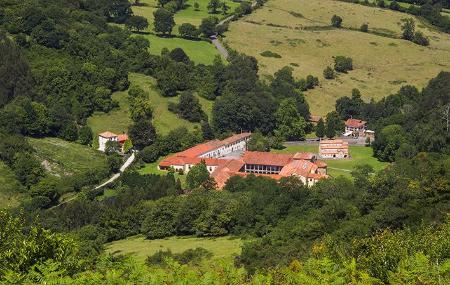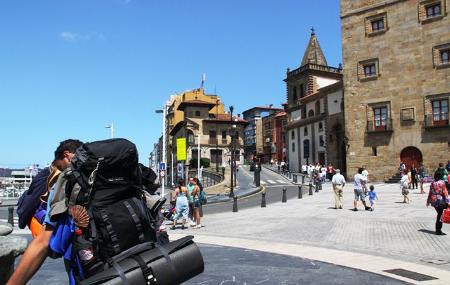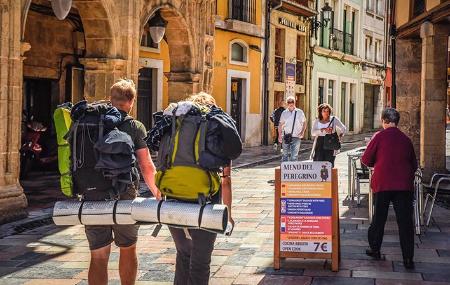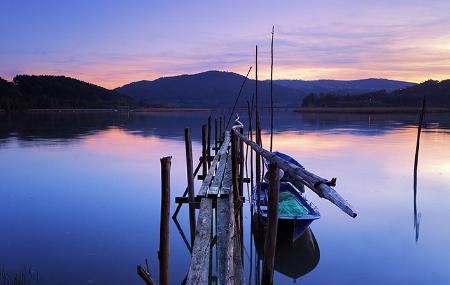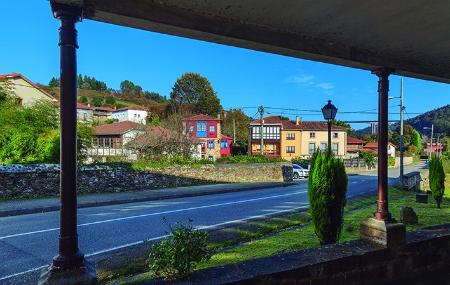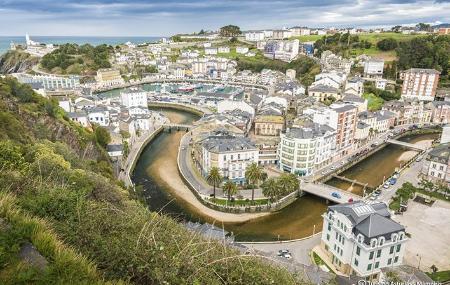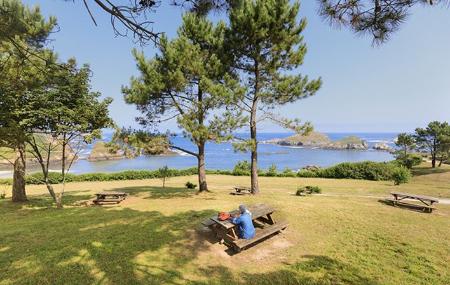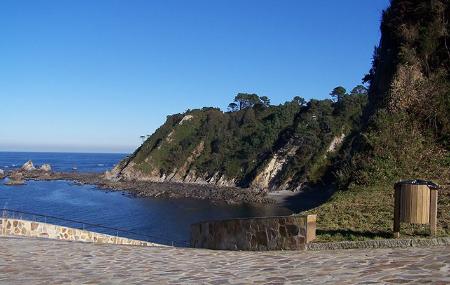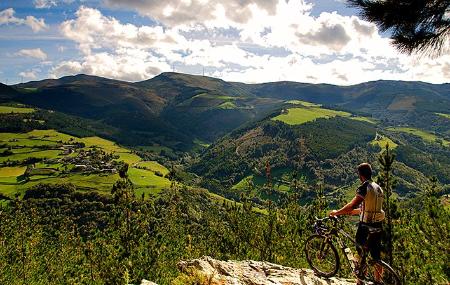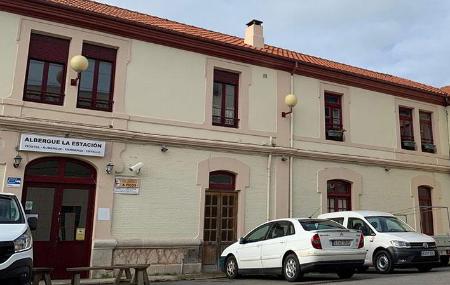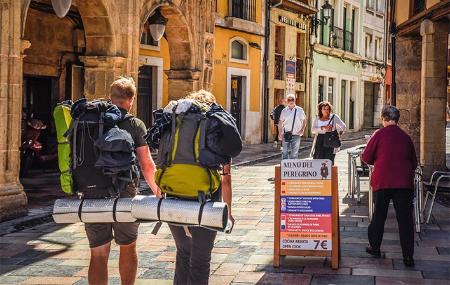Long before the consolidation of the French Way, undoubtedly the best known and most travelled Jacobean route, medieval pilgrims began to prefer for their adventure the so-called Coastal Way, a route of 815 kilometres that crossed the northwest of the Iberian Peninsula following the coastline.
/documents/39908/67680/peregrino-bustio.jpg/df2a3ec9-2800-f4f1-e0ed-08534e73fbdb?t=1729079245442

Bustio (Ribadedeva).
Soon it was the most used by those pilgrims who began their journey by sea, embarking in any of the ports of northern Europe to end up flowing into the Cantabrian coast.
The Northern Way, also known as the Way of Saint James of the Coast, would come to be the extension of the so-called "Soulac Way", which runs through the westernmost lands of France, once it enters the Iberian Peninsula. If the Primitive Way constituted the first route of pilgrimage to Santiago de Compostela and laid out the itinerary to be followed by those who set out from the capital of the Kingdom of Asturias on their way to the tomb of the apostle, the Coastal Way gradually defined the route for those who came from beyond the old royal seat and sought less arduous ways to reach Compostela.
It should be noted that, although around the 11th and 12th centuries the various monarchs began to promote the French Route, the primitive route and the Coastal Route maintained a considerable boom due to their status as safe itineraries, as they passed through clearly Christianised territories, as opposed to the other route, which was still exposed to possible Muslim incursions and therefore entailed greater risk.
The route of the Way of Saint James of the Coast
/documents/39908/67680/peregrinos-playa-moracey.jpg/535974a5-3fe4-4498-2bac-1db0aba73db4?t=1729146788728

Pilgrims on the beach at El Viso/Moracey (Caravia).
There is evidence that during the 13th century the Camino de Santiago de la Costa was still at its peak thanks to the pilgrims who opted for this route when they reached the pass of Irún and those who disembarked at the ports of Bermeo or Bilbao.
Nowadays, the route is a kind of nemesis of the French Way: if the latter crosses large mountainous areas to then develop through the arid plateau, the former crosses the border strip to run parallel to the Cantabrian Sea, giving a panoramic view of the historical, economic and social circumstances that have governed the evolution of the north of the peninsula.
/documents/39908/67680/peregrino-revillagigedo.jpg/00ff30ac-a2bc-bdb6-02bb-1a928112b1e2?t=1729080320773

Revillagigedo Palace (Gijón/Xixón).
The Coastal Route starts in Irún and arrives in Santiago after crossing the entire north of the peninsula. It enters Asturias via the Tina Mayor estuary and leaves the autonomous community via the Eo estuary, covering more than 280 kilometres and twenty-one councils along the way. Along the way, rural and seafaring Asturias is combined with an urban Asturias, whose domains are heavily industrialised, thus drawing a profile as complete as it is idiosyncratic of a land that has many more faces than those usually reflected in tourist postcards.
The official itinerary, which consists of thirteen stages as it passes through the autonomous community, can be extended or contracted as much as the pilgrims want, since the area has enough hostels and tourist establishments so that everyone can adapt their steps to the demands of the Camino.
Walk the Camino de Santiago de la Costa at your own pace and discover the essence of Asturias. 280 kilometres between estuaries, fishing villages and cities await you on this route full of contrasts.
/documents/39908/67680/mapa-camino-santiago-costa.png/83acf349-c55e-bd74-21cd-a4bdcff96172?t=1729065294858

Itinerary and stages of the Coastal Way
Search for hostels on the Coastal Way
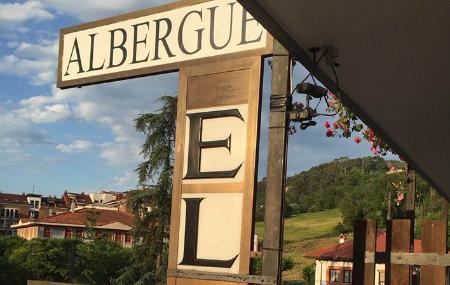 The Coastal Way
Stage 4: Priesca - Casquita
The Coastal Way
Stage 4: Priesca - Casquita
El Congreso
Villaviciosa (Villaviciosa)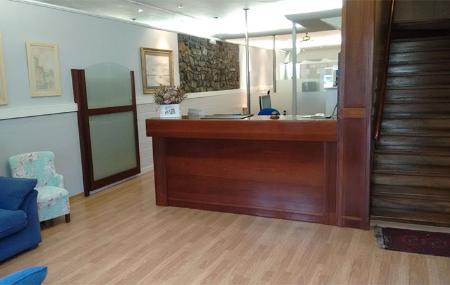 The Coastal Way
Stage 4: Priesca - Casquita
The Coastal Way
Stage 4: Priesca - Casquita
Albergue Villaviciosa
Villaviciosa (Villaviciosa)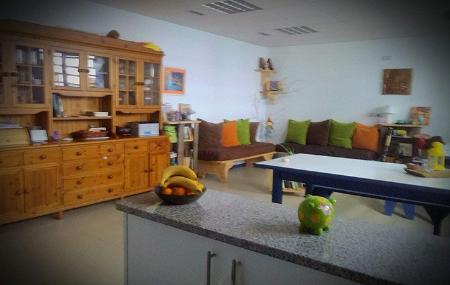 The Coastal Way
Stage 13: A Veiga - Abres
The Coastal Way
Stage 13: A Veiga - Abres
Albergue de peregrinos Mar y Montaña
A Veiga/Vegadeo (Vegadeo)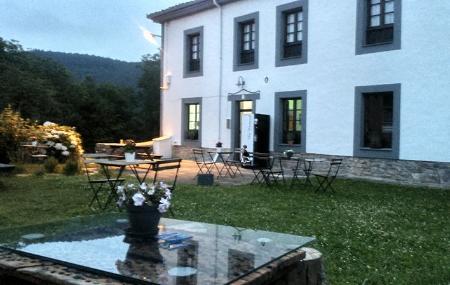 The Coastal Way
Stage 4: Priesca - Casquita
The Coastal Way
Stage 4: Priesca - Casquita
Albergue de peregrinos La Rectoral de Priesca
Priesca (Villaviciosa)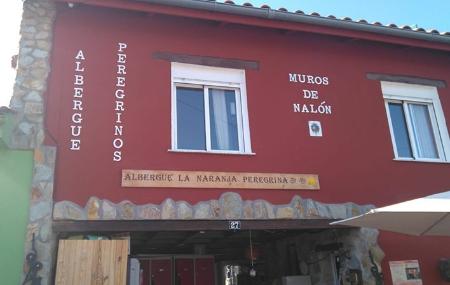 The Coastal Way
Stage 7: Avilés - Muros de Nalón
The Coastal Way
Stage 7: Avilés - Muros de Nalón
Albergue de peregrinos La Naranja Peregrina
Muros de Nalón (Muros de Nalón) The Coastal Way
Stage 1: Bustio - Llanes
The Coastal Way
Stage 1: Bustio - Llanes
Albergue de peregrinos La Llosa de Cosme
Piñeres (Pría) (Llanes)Between the sea and the mountains, from the centre to the periphery
One of the main attractions of Asturias lies in the symbiosis between the sea and the mountains. Both are undisputed protagonists of the Camino de Santiago de la Costa. The first, because it guides the walkers' journey from the moment they enter the autonomous community through the council of Ribadedeva until they leave it through the lands of Vegadeo. The second, because it will make its presence felt in different ways: clearly at the beginning, when the pilgrims cross the eastern fringe of the region and discover that there the distance between the waters and the peaks is minimal, and more subtly at the end, when the wide coastal shores of the West are interrupted, at the edge of the horizon, by the bluish silhouette of the mountain ranges.
/documents/39908/67680/playa-gueirua.jpg/261f4351-6e34-a212-badf-3a85c13dfccc?t=1729149169527

Gueirúa Beach (Cudillero).
The Coastal Pilgrims' Route to Santiago de Compostela follows an eminently rural and seafaring route, passing through towns and villages where the smell of saltpetre can be felt in the streets, and through inland corners that have managed to maintain their loyalty to the old trades.
Between them, the magnificent beaches stand out, which in many cases, such as those of the San Antolín sandy area or the beautiful Concha de Artedo, are true dream spots where you can stop to rest and recharge your batteries before continuing your journey.
Among the many natural attractions, the torrential spectacle of the bufones (vertical orifices that on days of high tide expel jets of pulverised sea spray) and the silent tranquillity of Cabo Busto stand out. But both corners are interrupted and underlined halfway along the route by another Asturias, the one that occupies the central stretch of the territory, where the passage (and the weight) of industrialisation and the resulting migratory flows from the countryside, the mountains and the ports to the big cities can be clearly seen.
/documents/39908/67680/cabo-busto.jpg/a7e20d77-b034-2b7d-2b8a-79fde630742e?t=1729149344339

Cape Busto (Valdés).
Myths and rituals
Along the Asturian coast, the echoes of the past assail and challenge us. The first traces of history bring us the echoes of emigrants who, after making their fortune in their destinations, returned to their homeland with the vocation of leaving their mark on it. The whole town of Colombres is a good example of this, but it is worth mentioning, for obvious reasons, the Archivo de Indianos, whose installations are housed in the "Quinta Guadalupe", a beautiful building that presides over the centre of the town centre.
The architecture of the Indianos, however, will be noticeable along our route in places such as Pendueles (with the so-called "casona de Verines", home to some famous literary meetings) and the town of Llanes itself, with its casino, its basilica of Santa María and its medieval tower heading some attractions to which we must add the "Cubos de la Memoria" (Memory Cubes) painted by Agustín Ibarrola.
/documents/39908/67680/archivo-indianos.jpg/1c2bcb96-7f55-d207-2181-ab35f65270d2?t=1729155094567

Archive of Indianos. Emigration Museum. Colombres(Ribadedeva).
Nearby, in the parish of Naves, stands the portentous church of San Antolín de Bedón, one of the best examples of rural Romanesque architecture in Asturias, where history and legend come together. Both elements are also combined a few kilometres further on, in Ribadesella/Ribeseya. There you will find the Tito Bustillo cave, one of the great Palaeolithic sanctuaries of northern Spain, whose paintings deserve to be admired and contemplated in detail.
The view of the church of Nuestra Señora de los Dolores rising above the marshland that separates the towns of Barru and Niembru is probably one of the most unique sights in eastern Asturias.
/documents/39908/67680/niembru.jpg/71f53b06-0cdd-87bb-0c21-0ab098e8a397?t=1729156423251

Our Lady of Sorrows in Barru (Llanes).
This was an area inhabited since ancient times, as is shown by the Jurassic Museum, located in the outskirts of Colunga, and the construction efforts of the Asturian monarchs reached it, leaving as their legacy the surprising pre-Romanesque church of San Salvador, in Priesca. In Villaviciosa, the Romanesque church of Santa María de la Oliva stands out for its lightness, but we should also pay attention to the house where Charles V spent the night, in what was his first night on the Iberian Peninsula, when he came to take possession of the throne. Very close by, in Amandi, another Romanesque church, that of San Juan, will surprise those who look inside for the originality of its apse of semicircular arches supported by double-decker columns.
Similarly, between Gijón/Xixón and Avilés, it is worth taking a leisurely stroll through the tomb necropolis of Mount Areo. It goes without saying that both cities call for a leisurely stroll through their streets. The silhouette of the Universidad Laboral, designed by the architect Luis Moya during the Franco regime, is still the largest building in Spain today.
/documents/39908/67680/muja.jpg/6be71e6b-71d0-4f16-85f9-6266aa942b37?t=1729158335583

Jurassic Museum of Asturias (Colunga).
The centre of Gijón/Xixón, with its emblematic beaches of San Lorenzo and Poniente, the neighbourhood of Cimavilla and the hill of Santa Catalina, is a figurehead oriented towards the horizon.
/documents/39908/67680/elogio.jpg/e73353de-18b8-17f8-5b29-88f08bc5cee2?t=1674197083015

In Praise of the Horizon (Gijón/Xixón).
The old quarter of Avilés, with its churches of San Francisco and San Nicolás de Bari, its palace of Camposagrado and its emblematic street of Galiana, is one of the surprises of central Asturias, complemented by the avant-garde lines of the Niemeyer Centre.
/documents/39908/67680/galiana.jpg/81b4724e-cc3d-8b29-1d4b-0c632c830d7a?t=1674197083655

Galiana Street (Avilés).
The crossing of the River Nalón, at Sotu, marks the incursion into the western fringe, which will become evident when passing through Muros. The west of Asturias is rich in seafaring enclaves, and although the Coastal Route does not pass through Cudillero, it does pass through the surrounding area, where it is possible to admire buildings such as the sumptuous Selgas estate (El Pito) before being taken to Soto de Luiña, with its elegant Baroque church of Santa María.
In Cadavéu, the house where Father Galo lived and wrote is preserved, which is the birthplace of modern Asturian literature, and Luarca/Ḷḷuarca is one of the most enjoyable visits on this stretch of the route, especially for its superb marine cemetery which offers unequalled views over the town itself and the Bay of Biscay. Navia also has literary resonances: the poet Ramón de Campoamor, so widely read in the 19th century, was born here. The Way leaves Asturias through the town of Abres, once past A Veiga, to enter the lands of Galicia.
/documents/39908/67680/embarcadero-rio-nalon.jpg/a82ad0b2-ebe8-0c92-c801-44876f40c727?t=1729170583168

Jetty at the mouth of the river Nalón (Soto del Barco).

